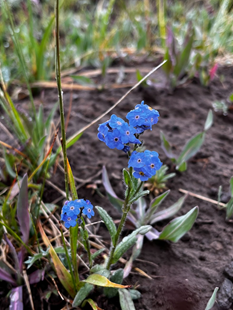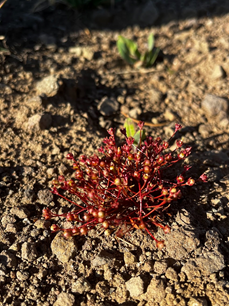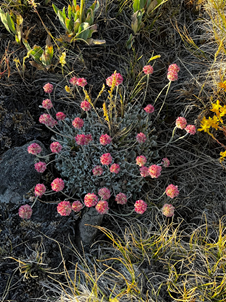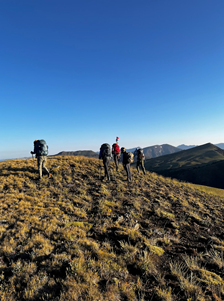When I began my summer as a Siegele conservation science intern, I never would’ve believed that I would get the opportunity to work with countless conservation agencies, programs, and firms across the state. I would have thought the scope of work I did throughout the summer was far beyond my capabilities. Yet after becoming a more skilled field worker and scientist, I truly felt like I had experienced incredible growth toward my future in this field. It also made my assignment to the GLORIA Project, in partnership with the National Park Service, far more exhilarating. I had been able to prepare all summer for the 10-day trip to Wyoming. I learned about how my body worked under the stress of different weather, and what I needed to stay healthy and focused in the field. I also learned important sampling techniques that would really come into play on this hitch. After an unsure lead up to the trip, filled with park flooding and time constraints, the project officially became a go. I was beyond thrilled at the mere thought of working in the alpine environments, let alone contributing to an international project only that occurs once every 5 years.


For context, the GLORIA program is an international program That stands for Global Observation Research Initiative in Alpine Environments. This program started tracking changes of alpine environments in 2001 and has established various sampling sites in National Parks around the globe. At these high elevation GLORIA sites around the world, observers collect vegetation and soil temperature data to track how conditions are changing. The sites are re-sampled every 5 years to allow time for any changes. Understanding these changes is vital to land managers focused on protecting alpine biodiversity. There is a vast variety of species that call the alpine ecosystem home, and each one tells a story of the ever-changing conditions.



On the first day of sampling with the GLORIA team, I quickly learned the importance of precise and knowledgeable data recording. This complex set up involved monitoring quadrats down to the decimeter. We sampled four neighboring summits, for up to 14 hours a day. We used general surveying methods to understand what plants and soil types were present. It was incredible to see true science at work!
This project goes beyond the scope of the NPS and United States, it gives insight into alpine environments all over the world by contributing to the answers to questions such as,
-
How do soil temperature and moisture impact vegetation by influencing water availability?
-
Which plant species appear to be the key, most resilient species for restoring alpine areas?
-
Which species are particularly vulnerable and need protection where possible?
-
Does the mix of species (community composition) in a site modify the effects of climate?
-
What kinds of changes are occurring in the amount of bare ground, or the mix of species present, that could affect habitat quality?
-
Are plant species shifting into new ecological niches? (Shifting where they live or how they use their habitat.)
-
Should we add new GLORIA locations or collect new types of information to better understand vulnerable species or habitat types? (NPS, 2021)
Throughout this hitch, I became far more inquisitive about the nature of alpine environments and what factors play into healthy ecosystems. It certainly helped to be surrounded by 360 degrees of stellar landscapes and biodiversity. I truly felt connected to the work I was contributing to. Being a part of this team allowed me to experience the most beautiful work environment, learn about incredibly resilient plants, and work with like-minded scientists. I will always be grateful for what I learned on this project, and the memories and knowledge that will last me a lifetime. Thank you to CNHP for this awesome opportunity!






